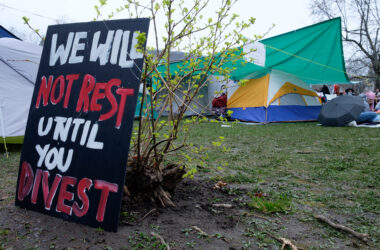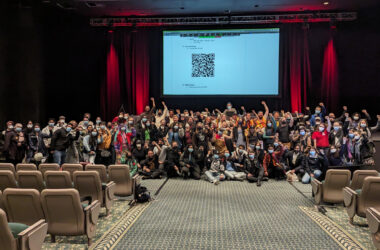Last Wednesday, Professor Krista Byers-Heinlein of Concordia University spoke to a crowd of professors and PhD students at McGill on the effects of bilingualism in infants.
Over the past two decades, there have been several contradictory studies regarding bilingualism and its effects on word association in young children. In one of her studies, Byers-Heinlein examined infants suckling while listening to language. The study revealed that infants were able to recognize when they were being addressed in a new language.
“What we did was catch language determination in our study,” Byers-Heinlein said, explaining that the experiment consisted of two phases, the experimental one–where English was spoken for several minutes while infants suckled–and the testing phase, where infants were presented with four minutes of another language.
“The implication is that the infants can detect the difference between the English and the [other language],” said Byers-Heinlein. “They should show induced interest and increase sucking in the test phase.”
Another of Byers-Heinlein’s studies looked at mutual exclusion, which is when children only recognize words in a specific language.
The result of her study on several groups of monolingual, bilingual and trilingual infants of 18 months showed that immersion in multiple languages made it more difficult for the subject to associate a word with a specific language.
One example Byers-Heinlein used was an experiment in which bilingual children learned both the English word “book” and the French word “livre.” These children seemed to have more of a challenge recognizing objects for which they learned two sets of words.
After answering a few questions from the audience, Byers-Heinlein talked about the implications of her work and its effects on society.
“I’m really interested in bilingualism for two reasons,” she said. “First of all, as much as we know about language acquisition, we know much much less about bilingual acquisition, so there is really such a need to learn what the normal path to bilingual acquisition is for infants that experience a bilingual environment.”
“There are babies all over the world in that condition, so it would be good to have a norm so parents would know what to expect, know when something is going awry.”
After the talk, Jonathan Berken, a PhD student from the integrated program in neuroscience, said, “It brings up a lot of paradigms for whether it’s really the word that a child recognizes.”
Shamea Mollai, a PhD student in communications, reflected, “It’s interesting to see the differences between the bilingual and monolingual mind and how they interact with their environment and how they communicate with others.”








